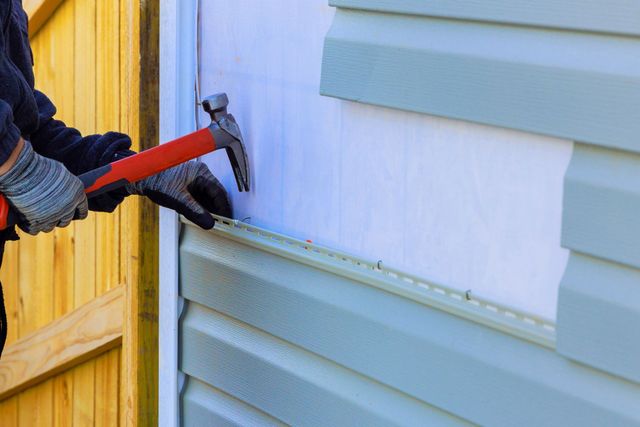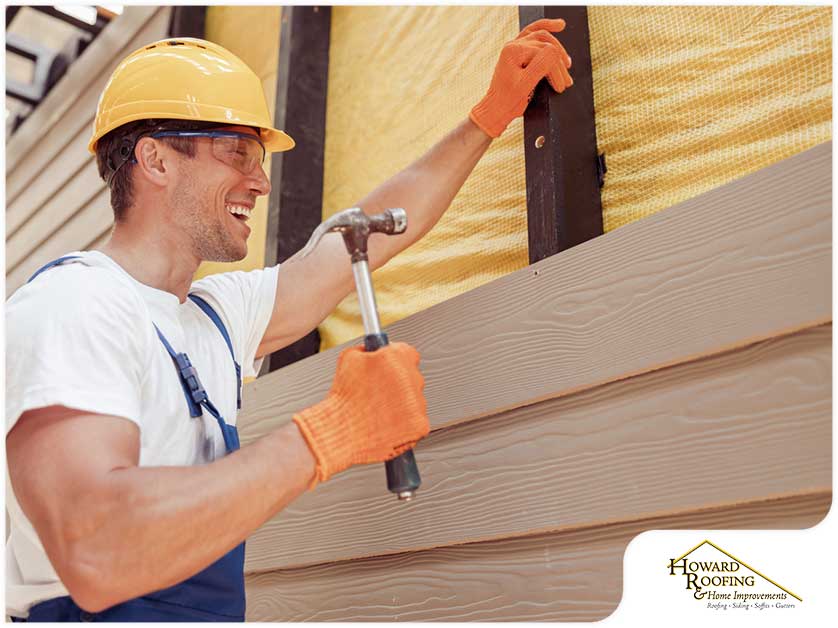The Crucial Guide to the Different Sorts Of Exterior Siding and Their Distinct Advantages
In the world of home enhancement, selecting the appropriate house siding is a critical choice that impacts both visual allure and practical performance. The selection of products offered, such as timber, plastic, fiber brick, cement, and steel, each deal distinct advantages that satisfy various demands and choices. Comprehending these distinctions can considerably boost the longevity and value of a residential property - morris siding contractor. With so lots of options to take into consideration, which siding product absolutely stands out for your certain job? Checking out these selections can lead to informed decisions that straighten with both style and usefulness.
Wood House Siding
Timber home siding, a popular selection for residential exteriors, offers a classic visual that integrates natural charm with architectural integrity. This siding material is readily available in various designs, consisting of clapboard, shingles, and board-and-batten, enabling property owners to customize their façade to match their style preferences. Wood siding is generally crafted from durable species such as cedar, redwood, or pine, which are understood for their resilience and capacity to hold up against environmental stress factors.
Among the primary benefits of timber home siding is its superb insulation residential properties, which can add to energy performance and lower heating expenses. Furthermore, timber house siding is biodegradable, making it an eco-friendly choice when sourced sustainably. Regular upkeep, consisting of paint or staining, can lengthen its life-span and improve its look, permitting home owners to maintain the all-natural beauty of the wood.
Nevertheless, prospective drawbacks consist of sensitivity to pests, rot, and weather damage, demanding adequate therapy and maintenance - morris siding contractor. In spite of these worries, when appropriately taken care of, timber home siding can give a resilient and stunning solution that enhances the character of a home while supplying a warm, welcoming environment

Vinyl Home Siding
Plastic siding has actually emerged as a leading selection for home owners looking for a low-maintenance outside alternative that combines resilience and cost. This versatile material is crafted from polyvinyl chloride (PVC), making it resistant to numerous climate problems, consisting of wetness and UV rays. As an outcome, plastic exterior siding does not warp, rot, or fade, guaranteeing resilient visual charm.
One of the main advantages of vinyl house siding is its extensive variety of colors and styles, permitting property owners to attain the wanted seek their property without the requirement for frequent repainting. Additionally, plastic house siding is easy to mount, which can considerably decrease labor expenses during building or remodelling jobs.
Plastic siding also adds to energy efficiency. Many alternatives function insulation backing, which boosts thermal efficiency, aiding to maintain comfy indoor temperature levels and potentially reducing power costs. Its smooth surface area promotes easy cleansing, calling for just routine cleaning with a garden hose pipe to remove dust and particles.
Fiber Concrete Exterior Siding
Fiber cement exterior siding has obtained grip among homeowners and building contractors alike because of its impressive combination of sturdiness and aesthetic flexibility. Made up of a mix of cement, sand, and cellulose fibers, this house siding alternative is engineered to stand up to severe climate condition, consisting of high winds, hefty rainfall, and temperature level changes, making it a resilient option for domestic outsides.

One of the primary advantages of fiber concrete exterior siding is its resistance to bugs, such as termites, and its non-combustible nature, offering enhanced fire safety and security. morris siding contractor. Additionally, it is readily available in a wide variety of shades, designs, and textures, enabling house owners to attain their desired visual without giving up performance
Another benefit is its low upkeep demands; fiber concrete exterior siding typically requires paint or staining every 5-10 years, which is less regular try this than other products. Its longevity contributes to a lower total expense of ownership, as it reduces the need for frequent fixings or replacements.
Ultimately, fiber cement home siding represents an excellent financial investment for those looking for a durable, appealing, and flexible exterior choice, integrating both kind and feature to enhance the home's curb allure.
Metal Siding
The appeal of metal home siding exists in its robust sturdiness and modern-day visual allure, making it a popular selection for modern design. Available in products such as aluminum and steel, metal siding provides a range of shades and surfaces, enabling property owners to attain a tailored appearance that enhances their design vision.

Power effectiveness is an additional significant advantage, as many steel exterior siding products are made with insulation alternatives that assist control interior temperatures. This can bring about minimized power expenses with time. Furthermore, steel siding is frequently recyclable, making it an ecologically pleasant choice for sustainability-minded property owners.
The installation procedure for metal exterior siding can be reasonably uncomplicated, causing a quicker turnaround time for construction projects. In general, steel house siding combines performance and style, making it a sensible choice for those seeking a visually appealing and long-lasting exterior coating.
Block and Stone Exterior Siding
Block and stone exterior siding stands apart as a classic option that enhances the aesthetic appeal of any home. Recognized for their resilience and reduced maintenance, these materials offer an exceptional return on investment while elevating the residential or commercial property's visual appeal. Readily available in different colors, textures, and patterns, block and stone can be customized to suit diverse architectural styles, from conventional to contemporary.
Among the key benefits of brick and stone siding is their power effectiveness. Both materials have all-natural insulating buildings that aid control indoor temperature levels, potentially decreasing cooling and heating costs. Additionally, they provide remarkable fire resistance contrasted to other exterior siding options, adding to boosted security.
Another advantage is their go long life. Brick and stone can last for years, often requiring very little upkeep beyond occasional cleansing. Unlike timber siding, they are impervious to pests and rot, ensuring a durable outside that endures the components.
Verdict
In summary, the option of siding significantly affects a home's visual appeal, click this site power performance, and upkeep requirements. Each type of home siding-- whether timber, plastic, fiber brick, metal, or cement and rock-- offers special benefits customized to different property owner preferences and ecological conditions.
One of the primary advantages of wood home siding is its superb insulation homes, which can add to energy effectiveness and lower home heating costs. Additionally, wood house siding is naturally degradable, making it an ecologically pleasant choice when sourced sustainably.One of the main benefits of steel house siding is its resistance to numerous ecological variables.Power efficiency is an additional substantial benefit, as many steel siding items are designed with insulation options that aid manage interior temperatures. Each kind of house siding-- whether timber, plastic, fiber block, metal, or cement and stone-- uses one-of-a-kind advantages customized to numerous home owner preferences and environmental problems.